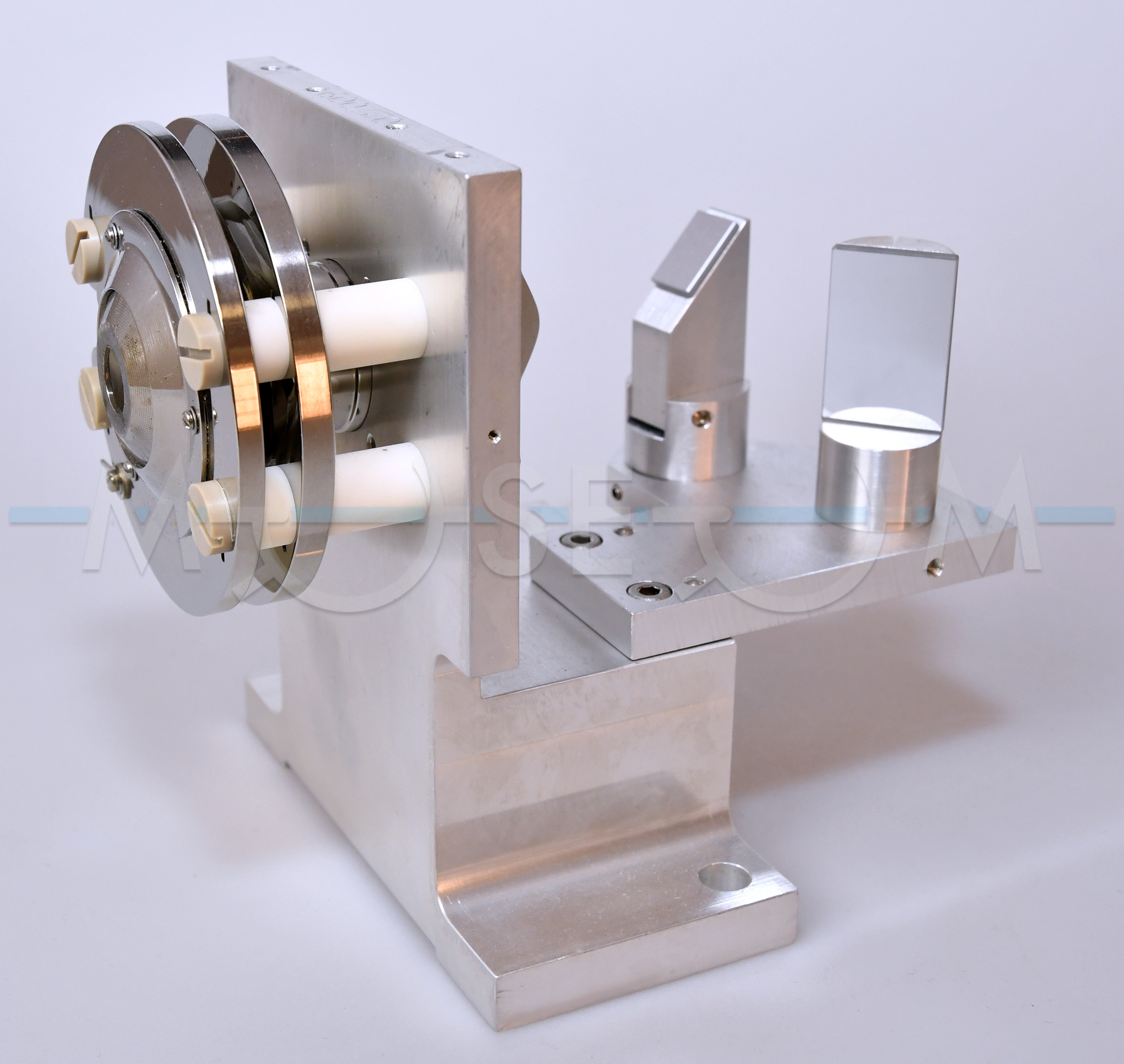Categories of exhibits
MALDI source ion & laser optics
Exhibit no. 983
In MALDI-TOF, a pulsed laser is focused on a target with a thin layer of a sample. A high voltage is applied between the target and a grounded counter electrode, thus accelerating the ions into the flight tube. The lighter ions fly faster and reach the detector before the heavier ions. The m/z values are calculated from the time of flight of the ions. The mass resolution in MALDI-TOF is limited by the relatively broad distribution of the ion energy. The resolution can be improved by a delay between the generation and extraction/acceleration of the ions. Faster ions, which have traveled further, receive less energy from the electric field than the slower ions. Thus, ions of the same mass arrive at the detector at the same time, irrespective of their initial velocities. The technique is known as “time-lag focusing” or “delayed extraction”.
The exhibit is a part of the MALDI source from the TofSpec 2E mass spectrometer manufactured by Micromass in the 1990s, which offered delayed extraction of ions. A laser line mirror directed UV laser beam (337nm, 4ns pulse width) through the ion source lenses to the target held at 20 – 30 kV. The sample stage was moved, allowing different areas of the target plate to be irradiated. The voltage on the extraction lens defined the intensity of the electric field and the focus lens served to guide the beam into the flight tube. The ion source provided independent control of the ion energy and extraction field strength while focusing the ions for high transmission.
Wikipedia: Delayed extraction
Wikipedia: MALDI





